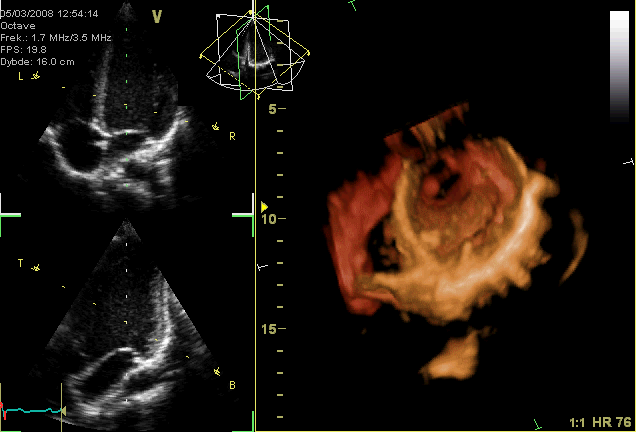The closing of the heart valves produces a sound. This sound may be described as either a "lub" or a "dub" sound. Heart sounds are a useful indicator for evaluating the health of the valves and the heart as a whole.
S1
The first heart sound, called S1, makes a "lub" sound caused by the closure of the mitral and tricuspid valves as ventricular systole begins. There is a very slight split between the closure of the mitral and tricuspid valves, but it is not long enough to create multiple sounds.
S2
The second heart sound, called S2, makes a "dub" sound caused by the closure of the semilunar (aortic and pulmonary) valves following ventricular systole. S2 is split because aortic valve closure occurs before pulmonary valve closure. During inspiration (breathing in) there is slightly increased blood return to the right side of the heart, which causes the pulmonary valve to stay open slightly longer than the aortic valve. Due to this, the naming convention is to divide the second sound into two second sounds, A2 (aortic), and P2 (pulmonary). The time between A2 and P2 is variable depending on the respiratory rate, but the split is generally only prominent in children during inspiration. In adults and during expiration, the split is usually not long enough to suggest two sounds.
Abnormal Heart Sounds
Abnormal heart sounds may indicate problems with the health of the valves. Heart murmurs sound like a "whoosh" or "slosh" and indicate regurgitation or backflow of blood through the valves because they cannot close properly. Heart murmurs are common and generally not serious, but some may be more severe and/or caused by severe underlying problems within the heart. Murmurs may also be caused by valve stenosis (improper opening) and cardiac shunts, a severe condition in which a defect in the septum allows blood to flow between both sides of the heart.
Third and fourth heart sounds, S3 and S4, differ from S1 and S2 because they are caused by abnormal contraction and relaxation of the heart instead of the closure of valves and are more often indicative of more severe problems than are heart murmurs. S3 represents a flabby or weak ventricle that fills with more blood than it is able to pump, while S4 represents a stiff ventricle, such as those found in cardiac hypertrophy. S3 makes a "ta" sound after the "lub-dub" while S4 makes a "ta" sound before the "lub-dub".

Opening and Closing of Heart Valves
The closing of the heart valves generates the "lub, dub" sounds that can be heard though a stethoscope.